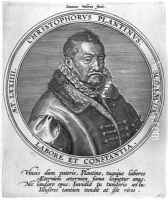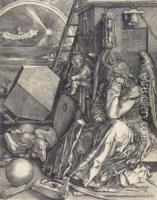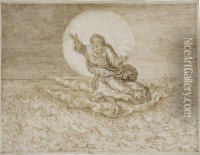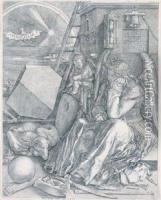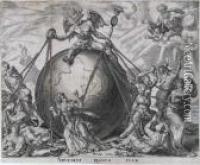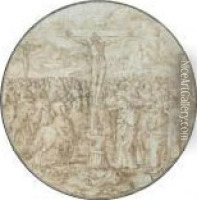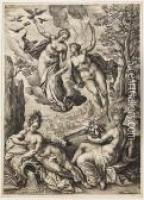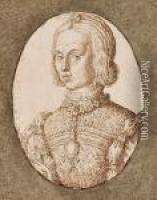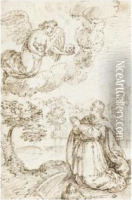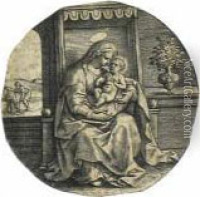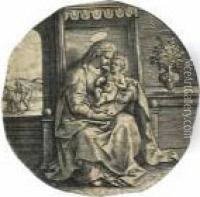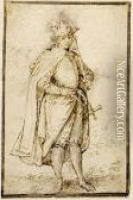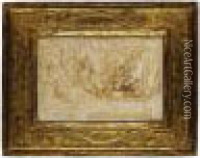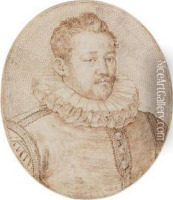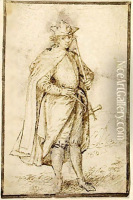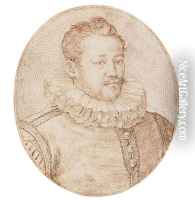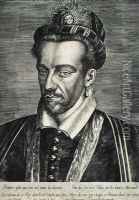Johan Wierix Paintings
Johan Wierix was a Flemish engraver and member of the renowned Wierix family of artists, which included his brothers Hieronymus and Anton II. He was born in 1549 in Antwerp, which was then part of the Habsburg Netherlands. The Wierix family is known for their intricate and detailed engravings.
From a young age, Johan showed a great deal of talent in the art of engraving and he, along with his brothers, was trained by their father Anton I Wierix. The Wierix brothers were active during the late Renaissance period, a time when the art of engraving was highly valued for the reproduction of artworks and the dissemination of visual ideas and styles across Europe.
Johan Wierix quickly established himself as a master engraver. His works were characterized by their extraordinary precision and the fineness of their detail. He was capable of reproducing the works of other artists with such accuracy that his engravings often served as valuable records of paintings and other artworks that have since been lost or damaged.
Over his career, Wierix produced a vast number of engravings, including religious subjects, portraits, and book illustrations. His engravings were not only sought after in the Netherlands but also gained considerable fame abroad, particularly in Spain and Italy. Johan Wierix’s works were often used as illustrations in books, and he worked for prominent publishers such as Christopher Plantin.
Despite his success as an engraver, Johan's life was not without difficulties. Historical records suggest that he had a tumultuous personal life and faced financial hardships, possibly due to the competitive nature of the print market and the complex economics of the art world during his time.
Johan Wierix passed away in 1618 in Brussels. Today, his works are held in high esteem and can be found in the collections of many major museums around the world. They continue to be studied by art historians for their technical brilliance and their role in the cultural exchange of Renaissance Europe.
